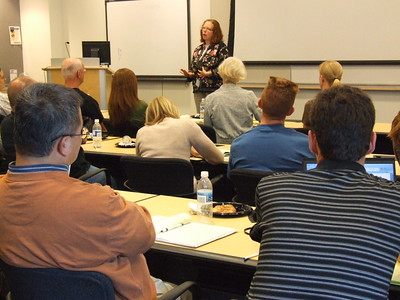Trends in Adult Education 2023
The acceleration of online learning and delivery of courses across virtual classrooms is the biggest trend in adult education.

In my organization the majority of training programs developed were delivered using a traditional classroom-based approach, but the pandemic caused the Learning department to redesign the mode of delivery to online courses, and that redesign had to happen as quickly as possible. A year after the switch the executives realized how much money was saved going to an online learning model, and there was no turning back. What will I need to do to prepare for designing adult online learning events?
The use of technology to train, educate, and coach employees has several implications on the way I will instruct over the coming years including learning what technologies are used the most across the industry, Learning and becoming proficient with Edutech, finding support communities for adult learning professionals, understanding how to engage learners across the virtual classroom, and how to ensure the learning experience is inclusive.
What Edutech is Available
To learn what technology is used the most across the industry I have joined Trainingmag.com and the Arizona State University Reshaping education website and blog. The article on 75 best EduTech apps and programs (Explore 75+ Useful EdTech Tools for K-12 & Higher Education | ShapingEDU, n.d.) was helpful and I have enrolled in the Provincial Instructors diploma program at Vancouver Community College to learn the foundations of adult education.
Adult Learning Professional Support Communities
To find support communities for Adult Learning Professionals I have joined TEDx, I am applying to be part of the Creative Commons Global Education Platform-Canada as well. My department has weekly learning community best practices meeting, and many university sites like Arizona University have many interesting articles I have been exploring.

How Best to Engage Online Learners
During the thick of converting all the courses at my organization to online versions we adopted a videoconferencing program that had built in polling, breakout rooms, and the ability to work together on a virtual whiteboard. Unfortunately, there were problems with the platform and many people didn’t have the bandwidth to participate. Additionally, the learning designers should have opted for lower quality images and videos to ensure all platforms could handle the program. Needless to say a year in and the IT department cancelled our arrangement with the initial provider and opted for a different service provider. I believe the speed of the transition to online learning, and our inexperience using the platform had a lot to do with why the first video conferencing program failed. The Instructional designers were not familiar with developing online courses and they did not follow best practices. I will need to learn how to design engaging online training, and continuously learn because some decisions especially regarding video conferencing platforms are outside of my departments control, so change, learn, and adapt is the lesson learned from that experience.
Ensuring Inclusive Learning Experiences
The article points out that just as schools were starting to close the division between students of different minorities, socioeconomic backgrounds and individuals that come from rural vs urban areas the pandemic hit. The pandemic caused students to work from home and the digital divide began.
Although this article is about students in k-12 there are relevant comparisons we can make to adult online learning.
The division between students of different minorities,socioeconomic backgrounds, and individuals from rural vs urban homes was shrinking prior to the pandemic. Unfortunately having to work from home the digital divide began to increase again because students had different levels of tools available to them when they were learning from home.
I can make a relevant comparison within my organization when we went from in person, onsite training to online learning from home. Not all learners had access to a laptop, desktop, or tablet. Many didn’t own a headset with a microphone for a computer either. Finally the learners internet connection was not as strong as needed and on several occasions people from rural areas lost power during training. The digital divide started to effect employees motivation to join training courses. So I “will take deliberate steps to ensure that all students feel welcomed and valued as part of the learning community.“(Setting the Tone for Inclusion: Crlt.umich.edu, n.d.)
Summary
Online learning for adult education is a trend that is here to stay, and I have a lot to learn because people want to learn on their own terms, in a place where they are comfortable and when their schedule allows for it. So, I will end my post with a quote:
“One hour per day of study in your chosen field is all it takes. One hour per day of study will put you at the top of your field within three years
Within five years you’ll be a national authority.
In seven years, you can be one of the best in the world in what you do.”
~Earl Nightingale
Never Stop Learning.
REFERENCES
Explore 75+ Useful EdTech Tools for K-12 & Higher Education | ShapingEDU. (n.d.). Shapingedu.asu.edu.
- Retrieved April 23, 2023, from https://shapingedu.asu.edu/blog/explore-75-useful-edtech-tools-k-12-higher-education
Setting the tone for inclusion: crlt.umich.edu. (n.d.). Google Docs.
7 Things You Should Know About the Digital Divide. (n.d.).Library.educause.edu.
This work is licensed under a Creative Commons Attribution-ShareAlike 4.0 International License.

